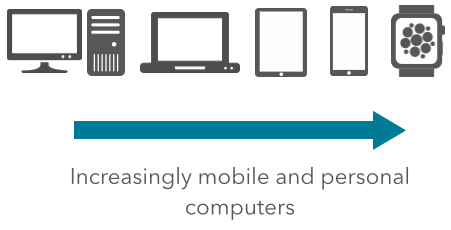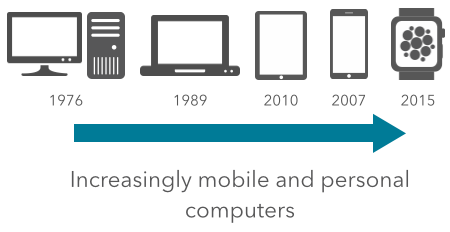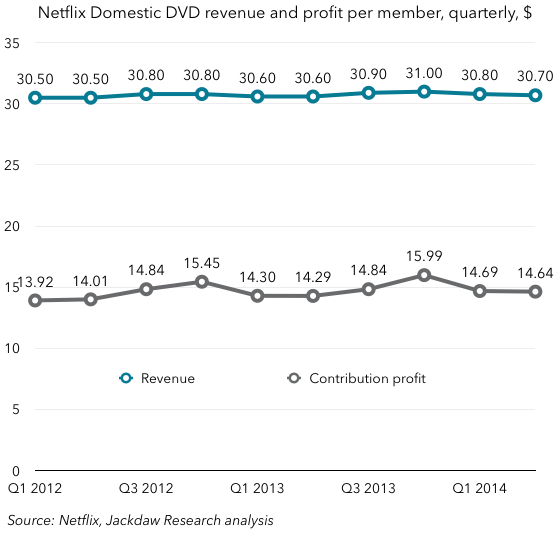The Wall Street Journal is reporting that Apple is finally beginning to get somewhere with its TV service, and has several key content providers on board. Techpinions readers won’t be surprised by any of this, because I’ve been talking up this strategy for some time now, starting a year ago in March 2014 and most recently this past week following the HBO Now announcement. At this point, the outcome I pointed to in that first piece seems more likely than ever, but it’s still not certain that it’ll be a success. As such, I wanted to talk about some of the details of the power struggle that remains ahead for Apple (and for other would-be providers of new pay-TV services) which I haven’t said much about previously.
From lots of little games of chicken to one huge one
What’s ahead is really a huge game of chicken, with the players being Apple (and other would-be new pay TV providers), the major existing pay-TV providers (and especially the major cable operators), and the content owners, both broadcasters and cable networks. There’s already a power struggle between the content owners and the pay TV providers over the fees the latter pay the former, due to two major evolutions:
- the shift from must-carry to retransmission consent models for local broadcasters, which means they’re now insisting that would-be carriers pay them for carriage
- the steady increase in affiliate fees for both some individual channels and for ever-expanding packages of channels from some of the major content owners, driven in particular by the rising cost of sports rights and additional sports channels, but also by the increasing investment in original content.
We’ve seen one carriage dispute after another in recent years, with several short-term blackouts, some smaller cable operators dropping Viacom or other content providers entirely from their lineups, and most recently Verizon dropping the Weather Channel, which had hitherto been the most widely-available cable channel in the US. These carriage disputes represent smaller games of chicken, with both sides calling the other’s bluff, and waging public battles for the minds of end users. In most cases, the pay TV providers have ended up caving to some extent and ponying up the required money to keep channels on air, but it’s no longer a sure thing. The relationship between these two sets of players has become increasingly tense, but with these traditional pay TV providers the only channel to market for cable networks in particular, and realistically the main route to market for broadcast channels too, there’s been little alternative but to reach terms and move forward. But many of the content owners would love a real alternative to the traditional hegemony of major cable and satellite providers. The two major telecoms companies, AT&T and Verizon, have provided some competition, but operate very much on the same basis as the old guard.
Incentives to deal, but also penalties for stepping out
All this gives the content owners huge incentives to find alternative routes to market, both as insurance against future carriage disputes and as leverage over the pay TV providers. Few of the content owners, though, have the broad, recognizable brands that would enable them to go it alone in any meaningful way, though CBS is one of a few to be testing the waters. What they would much prefer is to partner with a player which itself has leverage and a huge potential market for TV services, and that’s where Apple comes in. To be sure, Apple today is a tiny player in the overall video market, which generates about a hundred billion dollars in the US each year, the vast majority of it going through the cable providers. But what Apple has is eyeballs, credit cards, and platforms, all of which could be applied to such a service. Apple’s leverage is entirely in its potential as a provider.
The problem, though, is that any such move by the content owners would be seen for what it is – a gambit to break down the power of the traditional pay TV providers. And as such, those providers would retaliate. They have power over these content owners in several forms, with the harshest being refusing to carry channels, but the more moderate (and more realistic) being withholding marketing dollars from promoting those channels and the packages that contain them. Until such a time as any new partnership delivers equivalent benefits (which seems far off at best) they simply can’t afford to sacrifice their existing relationships.
Apple tried one way, but now for plan B
All this creates a dilemma, and a need for a strategy which balances these competing demands. The content providers need to forge partnerships which allow them to build leverage over the pay TV providers without alienating them. For this reason, and because Apple understands the inherent challenges of going up against the pay TV providers, Apple’s plan A was to work with the pay TV providers, rather than against them. It reportedly worked with Time Warner Cable before the Comcast deal was announced, and then switched to Comcast itself, but apparently without success. Comcast is unwilling to yield two things: the customer relationship, and the lucrative set top box fees that go with controlling the delivery of the TV service. Apple would have displaced both of those in a deal with Comcast, which meant it could never happen. Comcast apparently made this clear, and so Apple went to plan B.
If Apple is successful, of course, Comcast will lose both the things it refused to sacrifice in a much worse way than it would have done had it dealt with Apple instead of shutting the talks down. At this point, its greatest leverage is its NBC Universal holdings, with NBC apparently the major holdout broadcaster, but that’s far from a deal killer for the service Apple is creating. Disney is arguably the most important content partner, with its ownership of ESPN, but with the other major broadcasters on board too along with several others, and the recent HBO deal, Apple suddenly has a pretty compelling proposition on the way. The big question now is how the larger game of chicken plays out. So much of the success of Apple’s service will depend on the exact pricing and structure, and the completeness of its content offering. And that’s where the game of chicken comes back in. If the content owners provide overly attractive terms to Apple, they undercut their relationship with the pay TV providers. If the terms aren’t that attractive, Apple’s service won’t be priced competitively.
The challenges ahead
Some of the content owners – Viacom among them – are likely to be more desperate than others, and will sign up with Apple at decent rates. Others have already shown their willingness to break ranks with the pay TV operators through their deals with DISH’s Sling TV. But others will want to tread a more careful path, and that’s the other challenge Apple faces: being truly disruptive to the current model when it can’t undercut on price, and may well end up building a comparable bundle without the a la carte options some consumers (think they) want.
One other interesting piece of leverage Apple has with the content providers is its ability to track usage across its various devices, and across live/linear, DVR, and VoD, something advertisers are particularly keen on and which traditional pay TV providers have struggled to deliver. At some point, all of this reaches a tipping point where Apple’s TV service (and those like it, from Sony and potentially others) gains enough momentum and customer and content provider support that all the content providers can swing their support fully behind it. At this point, Comcast’s refusal to play ball with NBC content will become increasingly untenable, and I would bet Apple would make it very clear (either directly or through the media) that Comcast is to blame for NBC content being absent. The big question is how long it takes to reach this tipping point, and whether Apple can get enough support in the meantime to make things worthwhile.
Of course, for some consumers, simply being rid of the cable operator would be benefit enough, but of course Apple won’t be providing the broadband service over which these services will be delivered. The cable company will still play a role in many cases as the broadband provider, and with the loss of valuable TV revenue it’ll be tempted to compensate by raising broadband prices. If cable operators then also offer comparable over-the-top TV services as a retention strategy, the appeal and impact of Apple’s TV service may be further blunted. Apple’s differentiation will be greatest in the areas it specializes in – creating great user experiences across devices. Apple can apply some of what it’s acquired through Beats to develop recommendation features, and surely has plenty else up its sleeve. The effectiveness of this differentiation is ultimately what will drive Apple’s success or failure as a truly disruptive TV offering.




